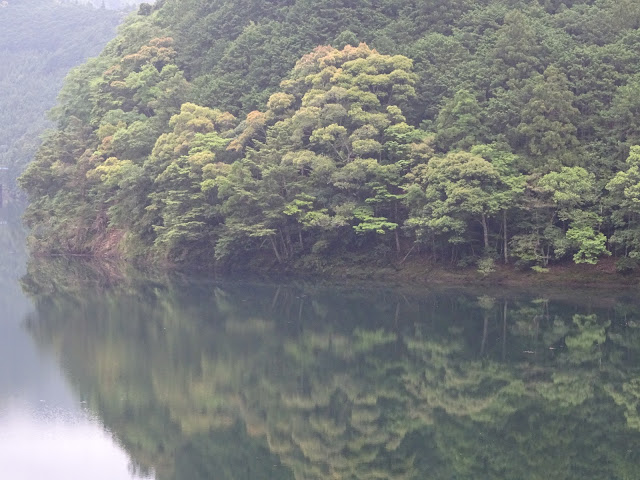The open-air onsen situated next to a wooded river was one of those countryside facilities that stimulate taking deep breaths of fresh air, the unclenching of stiff muscles, and falling into a deep state of chilling out.
 |
| Gorgeous river, sky, and mountain views |
I went to Kitayama, Wakayama, to experience a log rafting tour. Wakayama prefecture's natural beauty and lush forests astounded me. Wakayama attracts many Japanese tourists, who are more familiar with its historical, cultural, and geological attractions than most foreign visitors and residents of Japan. A surprisingly small percentage of foreign tourists explore this area, which boasts lush greenery, clear rivers, and friendly people.
.JPG) |
Ride traditional rafts made from local logs |
Most visitors to Kitayama come for one of the best river experiences to be had in Japan, riding log rafts made and steered by locals on the Kitayama River through the vibrant forests and a clear gorge within the Yoshino-Kumano National Park. Kitayama Village is the only location in Japan for this trip. Check out this excellent video of traditional log rafting available only in Wakayama, Japan. To learn about other adventures in Kitayama, check out the Kitayama Travel Magazine.
I wasn't sure where to stay in Kitayama, but acquaintances in Wakayama recommended cottage-like accommodations at Okutoro Onsen Yamanoyado. Immediately after check-in, I grabbed a towel from my room and headed to the indoor and outdoor baths for my first soaks of the journey before I was scheduled to meet another journalist.
 |
| Okutoro Onsen's indoor bath comes with an expansive view |
The bath is situated on the riverbank. Standing up on the edge of the rocks around the bath, I could look down into a small green valley. The river flowed slowly, branches swayed in the wind, and mist slipped through gaps in the forested peaks above.
 |
| Calm section of the Kitayama River |
 |
| Peaceful river reflections |
Before darkness fell across the surrounding mountains, I took a short walk around the hotel. There were no traffic sounds. The air was mountain clean and misty. Small foggy clouds wound their way through the tree tops and nearby peaks.
 |
| Okutoro Onsen Yamanoyado |
 |
| View from the bedroom |
The rooms were spacious, tidy, and well-illuminated by sunrays during the day. At night, the only sounds I heard were night birds and insects enjoying themselves in the relatively natural surroundings.
 |
| View while strolling between the hotel and the river |
Blessed with abundant rivers, streams, and waterfalls and a population of less than 400 people, Kitayama Village is a serene sanctuary from the stress of modern life.
Kitayama log rafting was one of the most thrilling river adventures I have had in Japan. The experience alternated between running rapids between boulders and cruising peacefully by waterfalls, flower and moss-covered rocks, and calm stretches of river. My friends and I were soaked and cold but exhilarated when we landed our rafts and returned by bus to our accommodations and onsens.
The onsens quickly heated our bodies, and we left Kitayama Village deeply reinvigorated and warmed.
To learn about other wonderful riverside onsens, click on the links below.
Onsen (Hot Spring) Addict in Japan: Secret Private Hot Spring
Onsen (Hot Spring) Addict in Japan: Free Public Outdoor Hot Springs in Myoko, Niigata
Onsen (Hot Spring) Addict in Japan: Best Japanese Hot Spring in Nature
Raft and onsen photographs provided by Kitayama Village.
Greg Goodmacher, also known as the Onsen Addict, took the other photographs.


















































